![]()
![]()
![]()
Use LEFT and RIGHT arrow keys to navigate between flashcards;
Use UP and DOWN arrow keys to flip the card;
H to show hint;
A reads text to speech;
61 Cards in this Set
- Front
- Back
|
six distinguishing features of living organisms |
-A high degree of chemical complexity and microscopic organization -Systems for extracting, transforming, and using energy from the environment -Defined functions for each of an organism's components and regulated interactions among them -Mechanisms for sensing and responding to alterations in their surroundings -A capacity for precise self-replication and self-assembly -A capacity to change over time by gradual evolution |
|
|
Plasma Membrane |
Defines the periphery of the cell, separating its contents from the surroundings. |
|
|
Cytoplasm |
the internal volume enclosed by the plasma membrane |
|
|
Cytosol |
the aqueous solution the cytoplasm is composed of |
|
|
Ribosomes |
the protein builders or the protein synthesizers of the cell. They are like construction guys who connect one amino acid at a time and build long chains. |
|
|
Proteasomes |
are used to degrade unneeded or damaged proteins by proteolysis, a chemical reaction that breaks peptide bonds. |
|
|
Metabolites |
intermediates in the biosynthetic and degradative pathways |
|
|
Coenzymes |
compounds essential to many enzyme-catalyzed reactions |
|
|
Nucloid |
Where the genome is replicated in prokaryotes |
|
|
Nucleus |
Where the genome is replicated in eukaryotes |
|
|
Genome |
The complete set of genes, composed as DNA |
|
|
Eukaryotes |
Animals and plants and such |
|
|
Prokaryotes
|
Not animals and plants and such |
|
|
Bacteria |
Inhabit soils, surface waters, and the tissues of other living things or decaying organisms |
|
|
Archaea |
inhabit extreme environments- salt lakes, hot springs, highly acidic bogs, and the ocean depths |
|
|
Eukarya |
All eukaryotic organisms |
|
|
Phototrophs |
Trap sunlight for energy |
|
|
Chemotrophs |
Derive their energy from oxidation of a chemical fuel |
|
|
Autotroph |
synthesize all of their biomolecules from CO2 |
|
|
Heterotroph |
require some preformed organic nutrients made by other organisms |
|
|
Mitochondria |
The site of most of the energy-extracting reactions of the cell |
|
|
Endoplasmic reticulum |
A network of membranous tubules, continuous with the nuclear membrane. It usually has ribosomes attached and is involved in protein and lipid synthesis. |
|
|
Golgi complexes |
It acts to process and package the macromolecules such as proteins and lipids that are synthesized by the cell. |
|
|
Peroxisomes |
where very long chain fatty acids are oxidized |
|
|
Lysosomes |
are filled with digestive enzymes to degrade unneeded cellular debris |
|
|
Vacuoles |
store large quantities organic acids, in plant cells |
|
|
Chloroplasts |
sunlight drives the synthesis of ATP in the process of photosynthesis, in plant cells |
|
|
Alanine |
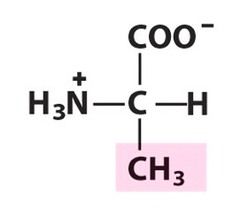
|
|
|
Serine |
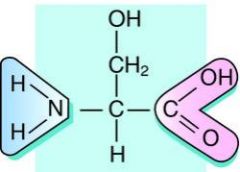
|
|
|
Aspartate |
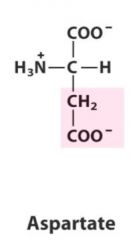
|
|
|
Tyrosine |
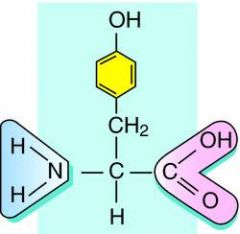
|
|
|
Histidine |
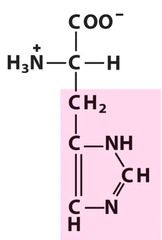
|
|
|
Cysteine |
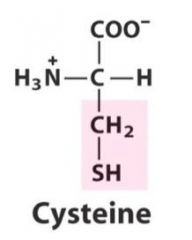
|
|
|
Uracil |
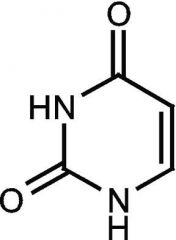
|
|
|
Adenine |
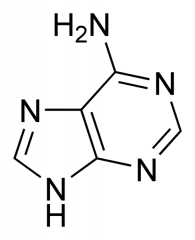
|
|
|
Guanine |
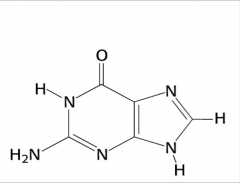
|
|
|
Methyl |
R-CH3 |
|
|
Ethyl |
R-C2H5 |
|
|
Phynyl |
R-C6H5 (Circle) |
|
|
Carbonyl (aldehyde) |
R-COH |
|
|
Carbonyl (Ketone) |
R-C=O-R |
|
|
Carboxyl |
R-CO2 |
|
|
Hydroxyl |
R-OH |
|
|
Enol |
R-COH=CH2 |
|
|
Ether |
R-O-R |
|
|
Ester |
R-CO2-R |
|
|
Acetyl |
R-O-CO-CH3 |
|
|
Anhydride |
R-CO-O-CO-R |
|
|
Amino |
R-NH3 |
|
|
Amido |
R-CO-NH2 |
|
|
Imine |
R-CNH-R |
|
|
N-Substituted Imine |
R-CNR-R |
|
|
Guanidinium |
R-NH-CN+H2-NH2 |
|
|
Imidazole |
R-CNHCHNCHC (Circle) |
|
|
Sulfhydryl |
R-SH |
|
|
Disufide |
R-SS-R |
|
|
Thioester |
R-COS-R |
|
|
Phosphoryl |
R-O-PO3H |
|
|
Phosphoanhydride |
R-O-PO2-O-PO2-O-R |
|
|
Mixed anhydride |
R-CO-O-PO2-OH |
|
|
dfbn |
sdfbgv |

